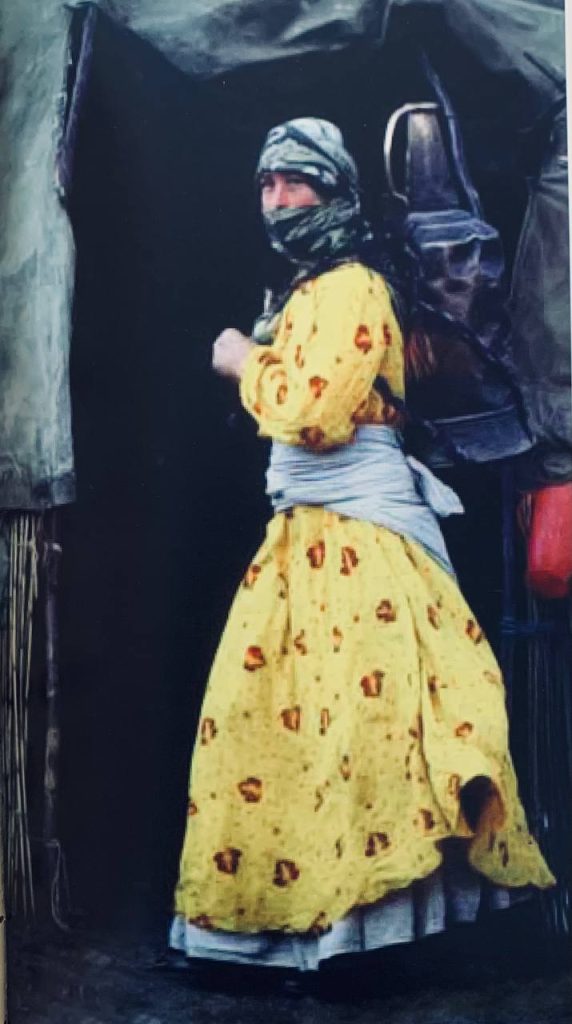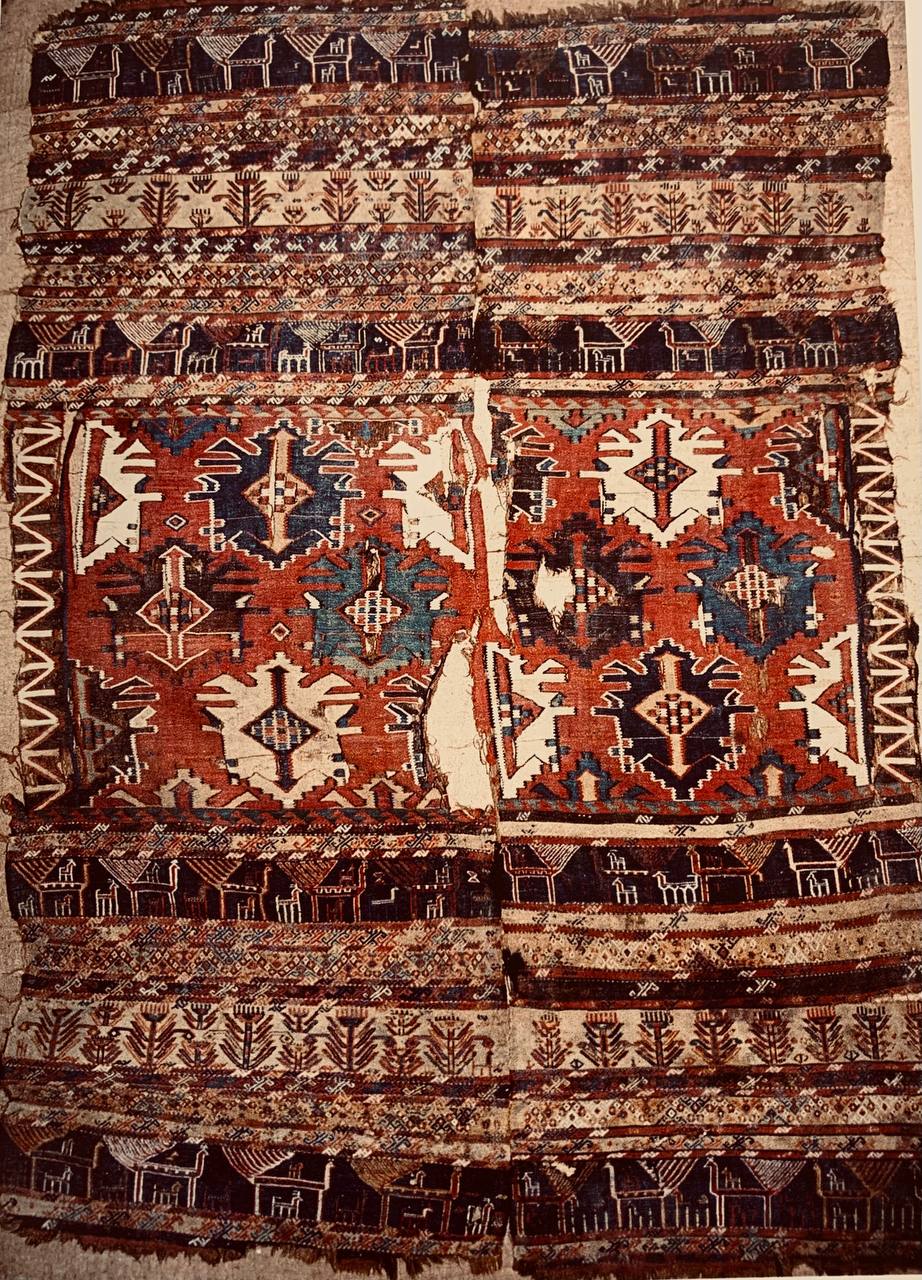The Shabsavan of Khamsch To which areas did the Shahsevan nomads migrate?
To which areas did the Shahsevan nomads migrate? Persian carpet South ofHashtrud, in an area of the same name live the Shahsavan ofKhamselh, who in eflect occupy a large area crossed by the Kezel Owqan, and stretching between Gazvin in the east and Bidjar in the west.
They also occupy a wedge of land in the central region of Hamadan. This group of Shahsavan are the closest to the Kurdish people in their customs, language and the decorative characteristics of their textiles.

The Shahsavan Khamselh also originated in the Moghan, which they left at some point between the end of the nineteenth Century and the beginning of the twentieth. To which areas did the Shahsevan nomads migrate?
Among the most noted of the clans are the Amir Afshar, who are reputed to be descendants of the Afshar people. Of Azerbaijani origin, they moved to the Saveh area in the eighteenth
Century. There are also groups of Bayat and Khodabandelu among Shahsavan Afshar’s number.
*Click on the opposite link to see precious Iranian handmade and machine combined silk carpets*
In the summer months., some migrate to Mount Qeydar, south of Zanjan. Other nomadic groups spend the summer on thevslopes of the Keplet Dagh, Chehel Dagh and Karadagh: a high-peaked chain of mountains which twists along the western side of the plain. To which areas did the Shahsevan nomads migrate?
During the winter, widely-scattered groups of nomads meet up in many places between Zanjan and Bidjar. Here they live in close contact with the local, rural population, often working on farms and taking on seasonal work even in the making of carpets. However, it should be made clear that very few Shahsavan Khamseh families still follow their nomadic tradition and migrate seasonally. persian Handmade carpet
Rich agricultural resources in the region have proved an irresistible temptation to settle, and the majority now live permanently in the many villages and farms dotted around the area.

The Shahsavan of Qazvin and Saveh
The last Shahsavan group, and the one which has moved furthest from its original area, is the Shahsavan of Gazvin and Saveh. They live in a fertile area with a favourable climate for agriculture and the raising of livestock. Silk carpet
The carliest reference to groups of Turkish-speaking nomads in the area goes back to the eleventh Century: the period immediately following the Seljuk conquests. Gazvin itself was for several decades the capital of the Safavid shahs bcfore it was transferred to the more central city of Isfahan.

Other groups of nomads also moved to Gazvin at the same time, in response to the Shah’s ban.
An area to the south of Saveh still has its ancient name of Khalajestan, which is linked to one of the oldest Turkish peoples to have reached the Iranian plateau. To which areas did the Shahsevan nomads migrate? Innovative return to old carpets in Iran
Even today, some of the nomadic groups who live alongside the Shahsavan call themselves Khalaj Today, the majority of the nomadic families belong to the Inanlu and Baghdadi groups; both have a long history.
The Inanlu are among the Turkish nomads who were expelled from the border area by Nadar Shah Afshar during the eighteenth Century. In the nineteenth Century, they were one ofthe largest and most authoritative groups of the Shahsavan confederation.

The origins and the period in which the Baghdadi settled are more controversial. Some believe they returned to Persia from Baghdad during the Safavid period, and were settled around Saveh by Nader Shah, who had forced them to leave Shiraz; or at a later date, by Mohammad Shah Qadjar. Historical changes styles of Persian carpet
According to tribal tradition however, they abandoned Shiraz for Saveh during the Safavid period. The period in which the Inanlu settled in Persia is also uncertain. Some of the group settled in Fars and joined the Khamseh confederation. To which areas did the Shahsevan nomads migrate? Persian carpet designs
Their transfer from the Moghan Plain to Gazvin is also attributed to Nader Shah and believed to have taken place at the end of the eighteenth Century. In any case, it is certain that there was a significant number in the area at the end of the nineteenth Century.
During the winter, the Baghdadi live close to Zarandand Saveh. In the summer, some groups move to the lateral valleys of the Karaghan massif. The Inanlu, are instead located further to the norh at Gazvin and in the summer migrate to the high pastures of the Kaflakuh
Mountains. Persian Rural carpet
One should also remember the group of Shahsavan who live side-by-side with Lurs, Bakhtiari and Kurds near Varamin, just a few kilometres from Tehran. Here, the multi-ethnic concentration of nomads goes back to the Qadjar and Pahlevi periods and took place after 1796, when Tehran was made the new capital.
This group is permanently sedentary, though a few families still migrate to their high pastures in the Alborz Mountains .
Shahsavan of Varamin To which areas did the Shahsevan nomads migrate?
Nomadic life is referred to a kind oflife, the transformation basis of which is nature. Nomads
go to summer quarters in the summer and winter quarters in the winter and stay in their camps as long as weather conditions allow them to stay.

Until recently in Tehran forty kilometers, in the areas of Varamin with villages of nice weather lived many different nomadic tribes. These tribes were settled there by the central government.
Kaklu, Zandi, Arab Halvayi, Tajik, Khanlarkhani. Arab Alanchary, Arab salari, Arab Salman,
Joshaghani, Zafarmand and Ardestani are Shahsavans living in Varamin. The ethnic diversity of the region was so high that at that point in time, there could be small Iran. Style and maktab of Persian carpet
Gradual migration of people can be one of the reasons of Tehran as being capital in 1796.
The identity of tribes in terms of social structure is nomadic and economically dependent on husbandry and seasonal agriculture.

Most of them have pastoral life style combined with seasonal migration. Different tribes of Varamin residents can also be Hadavand/ Seyed Shah Hosseini/ Ajami/ Tajik/ Inafar/ Chegini Kurds Pazuki Kurds/ Ghareh-Chorlu/ Osanlu Qashghaei/ Kani Arabs/ Kangarlu. Different Turkish speaking tribes moved to Varamin region during the period of Qajars.
Shahsavans from Mugan plains settled in a village called Shush Abad, northern Varamin.
Their weavings including carpets, kilims, pods, etc are very beautiful like Shahsavan weavings of
Hashtrood area, Southern Azerbaijan. To which areas did the Shahsevan nomads migrate?
Baghdadi Shahsavan To which areas did the Shahsevan nomads migrate?
Baghdadi Shahsavan is a major branch of Shahsavan and one of the great hordes of Iran. This tribe comprises of the two sub branches of Lak and Arekhlu, twenty nine clans, two hundred
and twenty families and a few hundred subfamilies. Town carpets
The core tribe of Baghdadi Shahsavan was displaced by Nader Shah in 1145-46 AH in the battle with ottomans. Baghdadi Shahsavans migrated to Fars regions after the assassination of Nader Shah and settled in Saveh, Qazvin and Hamedan on the hillsides of Kharqan during the reign of Qajar. Their political affairs were in the hands of Beigian tribe, the chieftain and elders of the tribe.

Baghdadi Shahsavan tribe has been of three IIbeigi (Lak, Arekhlu, Kalvand) at the time of Qajar and appointing positions was hereditary. Baghdadi Shahsavans made sedent by central government since 1928 and until 1935 the majority of them were resettled. Mohammad Ali
Samsam tried to encourage them back into migration, winter and summer quarters again after august 1940. To which areas did the Shahsevan nomads migrate?
About historic background of Baghdadi Shahsavans, Minouresky believes that they went from Shiraz to Saveh at the time of Shah Abbas I. Baghdadi Shahsavans migrated during Safavid era, Henry Field says and resided near Baghdad. To which areas did the Shahsevan nomads migrate?
They returned to Shiraz in the reign of Nader Shah. Mohammad Khan later settled them in Saveh. Carsten Niebuhr notifies of a thousand nomadic spots in the area of Sivas and Ankara in 1764. Kouse Lur is the largest Lak branch of Baghdadi Shahsan tribe. Mohammad Khorshid
Pasha refers to the fifty Lak nomadic families in Duzkhurmato and eighty families in Kirkuk in his travel account.

Mirza Mahdi Khan Astar Abadi adds that two thousand Bayat tribes reside in Kirkuk eight miles, displaced by the order of Nader Shah to Khorasan. They live under rectangular tents made of cotton. This structure made the passage of air into the tent and at the same time prevented water penetration because of goat hair fat.
